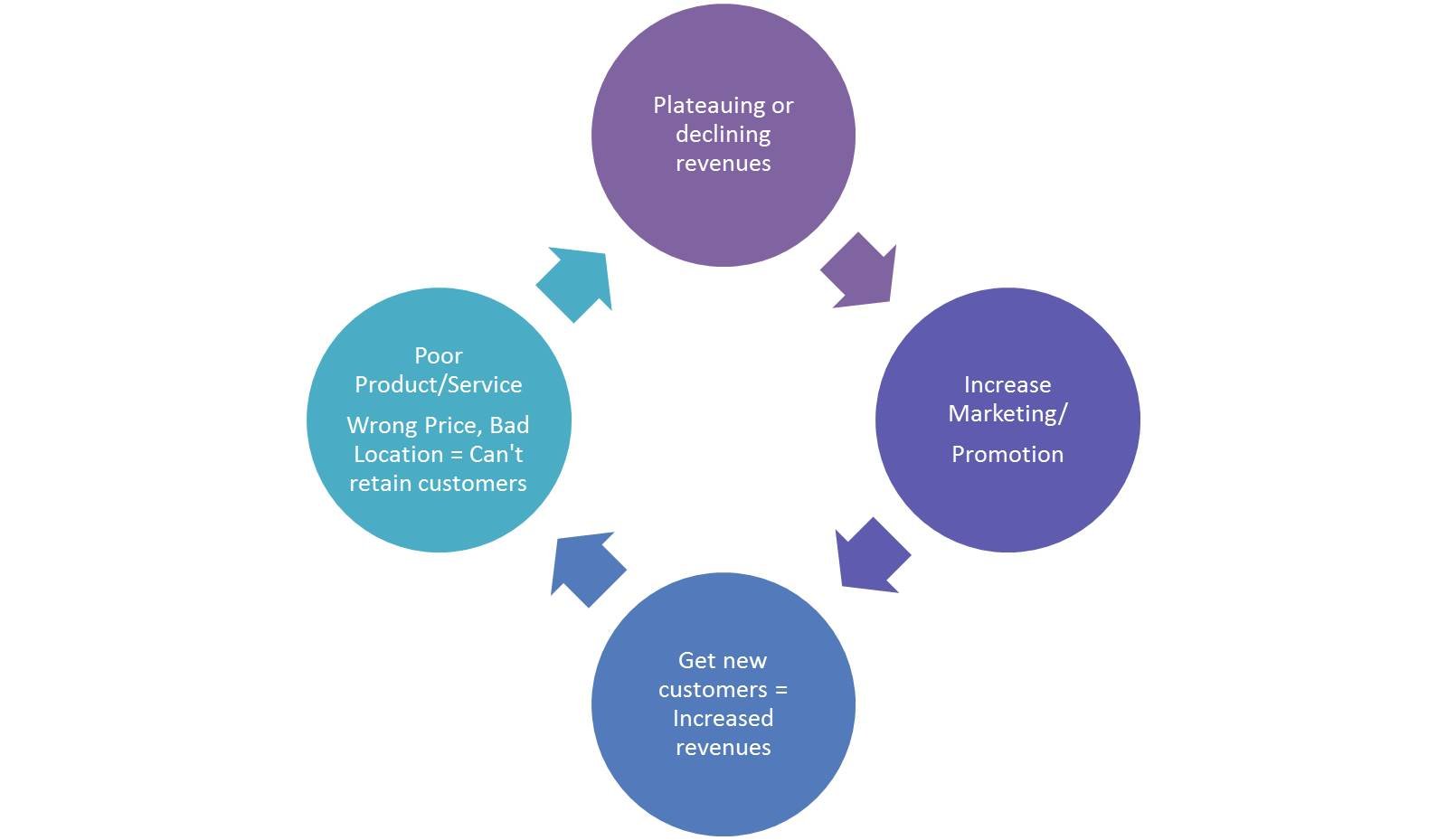This idea turns marketing upside down…!

picture by Magdalena Roeseler via Flickr
A friend of mine and I went to a new restaurant the other day. It’s billed as a cool, new trendy place and we were both looking forward to checking it out. When we got there, there was a bit of a line…and we were thinking “great – it’s a popular place and they’re doing well”. But a few minutes in line told a different story – here’s what we observed:
- The place was kind of a mess, several tables hadn’t been cleaned and it just generally didn’t look tidy
- It was loud, but not in an energizing way, more of an annoying I need to shout to be heard kind of loud
- And the line? It turns out they weren’t really that busy, it was more that the counter staff didn’t know what they were doing (and on top of that, they were kind of rude).
To be fair, this was a new place and hopefully they’ll turn things around. The food was good, but not great but more importantly the overall experience was certainly not something that would bring most people back.
What does this have to do with marketing?
EVERYTHING…!
This new restaurant had spent some solid money on branding, flyers, events and PR to get the word out – they were using several marketing tactics to get people talking and checking out their new restaurant.
But the greatest flyer in the world, the greatest ad ever isn’t going to impact the experience people have when they actually come into your business or become a customer. What many business owners don’t understand is that every single touch point that you have with someone is marketing.
Companies don’t get to define their own brand, the customers and the public will define it for them based on their experience (and then they’ll share it with hundreds of people via social media or sites like Yelp).
That’s why Tony Hsieh (CEO of Zappos) said:
“Your culture is your brand”.
And way before that David Packard (co-Founder of Hewlett Packard) said:
“Marketing is too important to be left to the marketing department”.
We’ve all been to that store that is immaculate, with clever displays, super friendly (and genuine) staff and an overall warm ambiance that makes you feel like you’re wanted there. It’s the type of store that you want to buy something in just because you appreciate what they stand for and how they operate.
Or how about the online retail experiences that educate or entertain first with consistent style and attention to detail? Sites like The Grommet with lots of informative ideas on new products or ManCrates.com, a company that seems to really enjoy what they’re doing and have a lot of fun sharing their products and ideas.
The difference is in the details and as Andy Sernovitz said:
“Marketing is what you do, not what you say”.
How can you apply this to your marketing?
The first step is counter-intuitive. You need to figure out who you really are. What do you stand for? What are your core values? That becomes the foundation for everything else.
Once you’re clear on who you are (which includes ‘Why’ you do what you do), then you can define / re-define your products or services so they align with who you are.
Also – while you’re reviewing your product or service, it’s a good time to do a pricing /revenue / profitability review. You don’t want to ramp up your marketing for a product that’s not making money. That’s a sure way to accelerate going out of business.
Finally – before you even consider creating any promotions, you need to spend some time designing and implementing the customer experience for your product or service. What are all of the touch points that potential customers and customers have with you? Are they positive and do they fit with your brand? Here’s a short list just to get you thinking:
- How do you answer the phone? Do you do it consistently and does it fit with your culture and brand?
- If you have a physical space, does it reflect who you are (or at least who you’re trying to be)?
- Do your front line employees…anyone that talks to customers, really ‘get’ how they need to interact? Should you train them?
- Does your packaging fit with your message and who you are?
- How about the little things that aren’t directly tied to the product or service? Bathrooms? Parking Lots? Invoices? Website? Any mailings that go out for anything…? How people dress? How people talk?
It’s not easy to build this kind of environment and it gets more difficult with larger businesses, but it’s critical if you want to be effective at marketing in the long run – it’s the only way to avoid an expensive marketing cycle (thanks to my friend Cindy Piva for this graphic):
Are you thinking about implementing a new marketing campaign? Maybe it’s time to review the little things first?
What do you think of this idea? Is it something you’ve considered with your marketing before? I’d love to hear your thoughts in the comments below.
Shawn Kinkade Kansas City Business Coach

